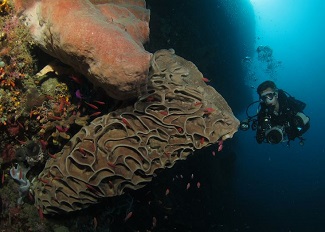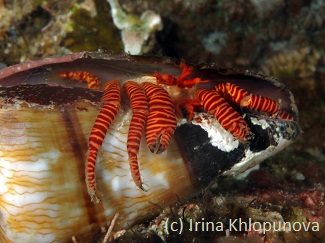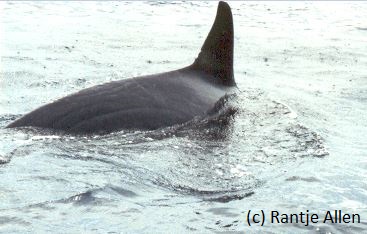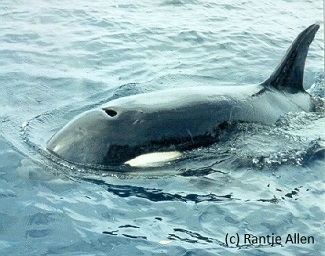Loading content - please wait...
Crustacean Identification Guide for Divers
Crustacean identification guide Coral Reef Crustaceans is newly available at Apple’s iBooks Store.
By a Diver for Divers

Mr. Andrey Ryanskiy is the author of this interactive crustacean identification guide. He is a Moscow-based financial consultant. He and his wife Irina are avid underwater photographers. The book represents countless dives over six years. The goal for his crustacean identification guide is to educate
, entertain and inspire.
Features of the Crustacean Identification Guide
Coral Reef Crustaceans contains more than 780 photographs. Of the 490 species covered in the book about 160 of them have never before appeared in other field guides. Leading marine specialists confirmed the scientific names of the critters contained in this crustacean identification guide. As its subtitle indicates, the region covered is from the Red Sea to Papua New Guinea. This guide is well organized and easy to use. Photos are high quality, full-screen shots.
It is a multi-touch book and best read with iBooks. Divers who have a Mac or iPad or use iTunes can download this crustacean identification guide for USD4.99. What a great bargain for 257 pages!
Unusual Species from Gorontalo
In December 2014 Andrey and Irina spent five days diving in Gorontalo. They returned for four more days in January 2015. Marine scientists consulted for the crustacean identification guide recommended diving in Gorontalo to them. The reason was the unique marine species available here. Andrey would often ascend from a dive to share something new or rare he had just seen or photographed. For him the most fascinating areas to search are below 40 meters and above three meters. He recommends Gorontalo for its combination of great wall dives and “pure blood” muck diving. He also notes that Gorontalo is one of the few regional destinations with good diving weather over the New Year period.

Irina wishes the dive guides of Miguel’s Diving were available in other locations. On one diving day, Andrey opened his book on his iPad and showed Miguel’s Diving staff his favorite crab, Trizopagurus strigatus. It is rarely seen. During the next dive, his guide found one for him. And Irina’s guide found another one for her!







